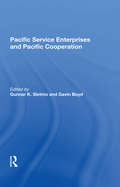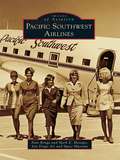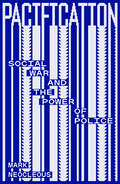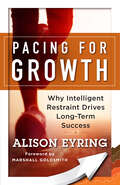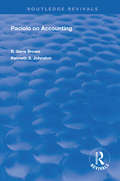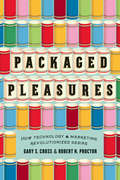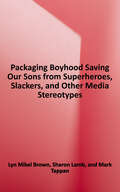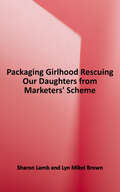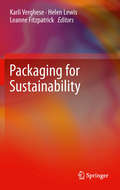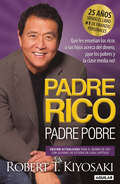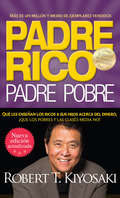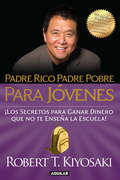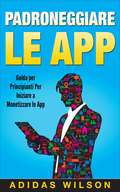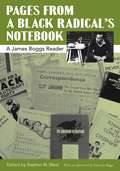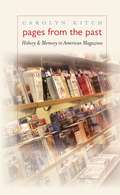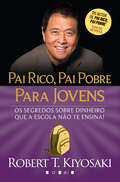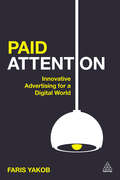- Table View
- List View
Pacific Service Enterprises And Pacific Cooperation
by Gavin Boyd Gunnar K Sletmo"This book is the result of a team effort that has brought together researchers from Europe, Japan and North America. Their backgrounds and experience reflect the interdisciplinary scope of the book, which covers economic, political and business aspects of service enterprises and cooperation in the Pacific-Asia region. The idea for this project originated with Gavin Boyd, who approached l'Ecole des Hautes Etudes Commerciales (HEC) in 1990 in order to explore possible avenues of cooperation. HEC's Center for International Business Studies (CETAI), which has a long-standing interest in Asia, agreed to support the project, and the newly created Orner DeSerres Chair of Commerce, also at HEC, accepted to coordinate the project and to provide technical support. Gavin Boyd, Associate Member of CET AI, and Gunnar K. Sletmo, Orner DeSerres Professor of Commerce and Member of CETAI, agreed to serve as coeditors for the book."
Pacific Southwest Airlines (Images of Aviation)
by Alan Renga Mark E. MentgesWith its low fares and friendly service, Pacific Southwest Airlines (PSA) was one of the most successful regional airlines in American history. Its distinctive orange, red, and white planes, complete with a beaming smile were immediately recognizable to those living on the West Coast. The airline was also known for employing beautiful and sociable flight attendants. Kenny Friedkin, the founder of PSA, started in 1949 with one leased DC-3 and expanded his fleet to serve millions of passengers each year. Although PSA is no longer in operation, its successful business model of low-priced, efficient service was copied by other airlines and today is considered the norm. In addition, former PSA employees still gather annually to relive the camaraderie they experienced as being a part of one of the most unique airlines of all time.
Pacification: Social War and the Power of Police
by Mark NeocleousThis provocative book offers the first sustained critique of the theory and practice of pacificationIn his new book, critical theorist Mark Neocleous engages in a sustained critique of the theory and practice of pacification. Combining philosophical analysis with historical detail, Neocleous analyses the development of pacification as a key concept through which capitalist modernity has been organized, offering readers the first book that treats pacification as an important concept in the history of state power and capitalism.Neocleous&’s approach is fourfold, examining pacification as social warfare carried out through the ideology of peace; as a form of social police carried out through mechanisms of security; as law and order exercised through the permanent wars of class society; and as the myriad practices of power designed to counter insurgency.Making use of official documents of state, the writings of counterinsurgency thinkers and the ideas perpetuated by practitioners of counterrevolution, the book unravels the complex ways through which pacification generates new forms of social war and new modes of policing that reproduce capitalist order and fabricate obedient subjects.Through expansive accounts of war and police, and engaging with a range of topics from debt to death, from stasis to civil war, and from the police kettle to the politics of fear, the book offers a provocative analysis of the ways in which state and capital combine to build a pacified social order.
Pacing and Derisking Innovation Investments
by Rowan Gibson Peter SkarzynskiThis chapter shows you how to distinguish between different kinds of growth opportunities in terms of time frame and risk profile and provides some practical guidelines for pacing and derisking your commitments.
Pacing for Growth: Why Intelligent Restraint Drives Long-term Success
by Alison EyringGo the Distance!Whether you're running a race or running a company, pacing is everything. Go too fast and you'll burn yourself out—too slow and you're left in the dust. So how can leaders find the right speed? Growth expert Alison Eyring, who is also a long-distance runner and triathlete, found the answer in endurance training. It's a concept she calls Intelligent Restraint. Eyring shows leaders how to evaluate their company's and team's current capacity for growth and identify the right capabilities and pacing strategies to increase growth steadily and sustainably. She masterfully weaves physiological and psychological research, in-depth business case studies, examples from real leaders, and practical tools with her own narrative of endurance training. The result is a revolutionary new mindset for enduring success.
Paciolo on Accounting (Routledge Revivals)
by R. Gene Brown Kenneth S. JohnstonPublished in 1963, this book about the famous accountant and bookkeeper Luca Paciolo explores his extraordinary contribution to the development of the accounting profession. Paciolo is the first known writer to publish a work describing the double entry process.
Package Design Workbook: The Art And Science Of Successful Packaging
by Steven Dupuis John SilvaThe Art and Science of Successful Packaging provides designers with a thoughtful packaging primer that covers the challenges of designing packaging for a competitive market in a very hardworking and relevant way. Package Design Workbook addresses all aspects of the creative process including choosing a package format, colors and materials, final finishes, and special considerations such as awkward objects and unique display considerations. This book breaks down the process of design in a much more comprehensive way than most books on the subject, which just analyze the final designs. This guide also offers case studies in the back half of the book with the text focusing on why specific colors, formats, type treatments, and finishes were chosen, and what the resulting effects were on the consumer and the client.
Packaged Pleasures: How Technology & Marketing Revolutionized Desire
by Robert N. Proctor Gary S. CrossFrom the candy bar to the cigarette, records to roller coasters, a technological revolution during the last quarter of the nineteenth century precipitated a colossal shift in human consumption and sensual experience. Food, drink, and many other consumer goods came to be mass-produced, bottled, canned, condensed, and distilled, unleashing new and intensified surges of pleasure, delight, thrill--and addiction. In Packaged Pleasures, Gary S. Cross and Robert N. Proctor delve into an uncharted chapter of American history, shedding new light on the origins of modern consumer culture and how technologies have transformed human sensory experience. In the space of only a few decades, junk foods, cigarettes, movies, recorded sound, and thrill rides brought about a revolution in what it means to taste, smell, see, hear, and touch. New techniques of boxing, labeling, and tubing gave consumers virtually unlimited access to pleasures they could simply unwrap and enjoy. Manufacturers generated a seemingly endless stream of sugar-filled, high-fat foods that were delicious but detrimental to health. Mechanically rolled cigarettes entered the market and quickly addicted millions. And many other packaged pleasures dulled or displaced natural and social delights. Yet many of these same new technologies also offered convenient and effective medicines, unprecedented opportunities to enjoy music and the visual arts, and more hygienic, varied, and nutritious food and drink. For better or for worse, sensation became mechanized, commercialized, and, to a large extent, democratized by being made cheap and accessible. Cross and Proctor have delivered an ingeniously constructed history of consumerism and consumer technology that will make us all rethink some of our favorite things.
Packaging Boyhood: Saving Our Sons from Superheroes, Slackers, and Other Media Stereotypes
by Sharon Lamb Lyn Mikel Brown Mark TappanPlayer. Jock. Slacker. Competitor. Superhero. Goofball. Boys are besieged by images in the media that encourage slacking over studying; competition over teamwork; power over empowerment; and being cool over being yourself. From cartoons to video games, boys are bombarded with stereotypes about what it means to be a boy, including messages about violence, risk-taking, and perfecting an image of just not caring. Straight from the mouths of over 600 boys surveyed from across the U.S., the authors offer parents a long, hard look at what boys are watch ing, reading, hearing, and doing. They give parents advice on how to talk with their sons about these troubling images and provide them with tools to help their sons resist these mes sages and be their unique selves.
Packaging Girlhood: Rescuing Our Daughters From Marketers' Schemes
by Sharon Lamb Lyn Mikel BrownThe stereotype-laden message, delivered through clothes, music, books, and TV, is essentially a continuous plea for girls to put their energies into beauty products, shopping, fashion, and boys. This constant marketing, cheapening of relationships, absence of good women role models, and stereotyping and sexualization of girls is something that parents need to first understand before they can take action. Lamb and Brown teach parents how to understand these influences, give them guidance on how to talk to their daughters about these negative images, and provide the tools to help girls make positive choices about the way they are in the world. In the tradition of books like Reviving Ophelia, Odd Girl Out, Queen Bees, and Wannabees that examine the world of girls, this book promises to not only spark debate but help parents to help their daughters.
Packaging You!
by Greg WoodThis essential guide is designed to help you quickly succeed in your search for employment in today's economy. Things have changed, times have changed, and times are tough. Old methods that typically rely on resumes and cover letters no longer work. New strategies and tools are needed for job-hunting success, and you will find them here. The Hire Advantage combines the four key milestones to employment based on Greg Wood's proven job-hunting series, TheHireRoad: Packaging - teaches you how to implement new and unique tools that will clearly separate you from your competition. Promotion - introduces strategies and techniques that help you successfully penetrate the hidden job market by broadcasting your value to the business community, not your resume. Product Demonstration - teaches you the techniques to conduct a proactive, strategic interview that will greatly enhance your chances of getting the offer. Pricing - teaches you how to negotiate the difference between what you're offered and your true worth to the organization.
Packaging for Sustainability
by Helen Lewis Leanne Fitzpatrick Karli VergheseThe packaging industry is under pressure from regulators, customers and other stakeholders to improve packaging's sustainability by reducing its environmental and societal impacts. This is a considerable challenge because of the complex interactions between products and their packaging, and the many roles that packaging plays in the supply chain. Packaging for Sustainability is a concise and readable handbook for practitioners who are trying to implement sustainability strategies for packaging. Industry case studies are used throughout the book to illustrate possible applications and scenarios. Packaging for Sustainability draws on the expertise of researchers and industry practitioners to provide information on business benefits, environmental issues and priorities, environmental evaluation tools, design for environment, marketing strategies, and challenges for the future.
PadFone vs. FonePad
by Willy Shih Sen ChaiTo Jonney Shih, Chairman of ASUSTek Computer, the introduction of Apple's iPad made clear the need to transition his company to a new cloud-computing era. But the company's roots in the manufacture of Windows-powered desktop and notebook PCs bounded the creativity of his design and engineering teams. The case examines the ASUS's efforts to get into the smartphone business, leveraging experimentation it has done in tablets and a range of hybrid devices. Will its experimentation and recombination of features lead it to market success, or simply confuse consumers?
Paddle8: Painting a New Picture of the Art Market
by Mukti KhaireThe Paddle8 case is a short case that presents the idea for a new business in the global art market and asks students to evaluate whether it will work, given the structure and unique workings of the art market. Paddle8 is a New York-based startup that partners with well-known galleries to offer art works from their collections for sale on the Paddle8 website to carefully selected, globally-dispersed members. The firm aims to help galleries overcome their geographic limitations and to make art more accessible to a wide range of new collectors with the help of its technology platform. The question is: will this succeed in the context of the art market where exclusive access is a prime driver of value?
Padre Rico, Padre Pobre: Los Secretos Para Ganar Dinero Que No Te Ensenan En La Escuela! (Padre Rico Ser.)
by Robert T. KiyosakiBasado en el principio de que los bienes que generan ingreso siempre dan mejores resultados que los trabajos tradicionales, Robert Kiyosaki explica cómo pueden adquirirse dichos bienes para, eventualmente, olvidarse de trabajar.El libro #1 de finanzas personales.Con un estilo claro y ameno, este libro te pondrá en el camino directo al éxito financiero y así lograrás que el dinero trabaje para ti.Padre rico Padre pobre es el bestseller que revolucionó la forma de entenderlas finanzas personales. El autor y conferencista Robert Kiyosaki desarrolló una perspectiva económica única a partir de la exposición que tuvo a dos influencias: su propio padre, altamente educado pero muy inestable y el padre multimillonario, sin educación universitaria, de su mejor amigo.Los problemas monetarios que su Padre pobre experimentó toda la vida (concheques mensuales muy respetables pero nunca suficientes) rompían con lo que le comunicaba su Padre rico: que la clase pobre y la clase media trabajan por dinero pero la clase alta, hace que el dinero trabaje para ellos. Kiyosaki presenta la filosofía detrás de esta relación excepcional con el dinero. Este libro aboga de manera convincente por el tipo de conocimiento financiero que nunca se enseña en las escuelas.Padre rico padre pobre lo ayudará a:-Derribar el mito de que usted necesita tener un ingreso elevado para hacerse rico.-Desafiar la creencia de que su casa es una inversión.-Mostrar a los padres por qué no confiar en el sistema escolar para la enseñanza de sus hijos acerca del dinero.-Definir de una vez y para siempre qué es una inversión y qué es una obligación.-Mostrar qué enseñar a los hijos acerca del dinero para su futuro éxito financiero.Lo que ha dicho la crítica:"Padrerico padre pobre es el punto de partida para quien quiera tomar el control de su futuro financiero." -USA Today
Padre Rico, Padre Pobre: Qué les enseñan los ricos a sus hijos acerca del dinero, ¡que los pobres (Padre Rico Ser.)
by Robert T. KiyosakiBasado en el principio de que los bienes que generan ingreso siempre dan mejores resultados que los trabajos tradicionales, Robert Kiyosaki explica cómo pueden adquirirse dichos bienes para, eventualmente, olvidarse de trabajar. El libro #1 de finanzas personales. Con un estilo claro y ameno, este libro te pondrá en el camino directo al éxito financiero y así lograrás que el dinero trabaje para ti.Padre rico Padre pobre es el bestseller que revolucionó la forma de entender las finanzas personales. El autor y conferencista Robert Kiyosaki desarrolló una perspectiva económica única a partir de la exposición que tuvo a dos influencias: su propio padre, altamente educado pero muy inestable y el padre multimillonario, sin educación universitaria, de su mejor amigo.Los problemas monetarios que su Padre pobre experimentó toda la vida (con cheques mensuales muy respetables pero nunca suficientes) rompían con lo que le comunicaba su Padre rico: que la clase pobre y la clase media trabajan por dinero pero la clase alta, hace que el dinero trabaje para ellos. Kiyosaki presenta la filosofía detrás de esta relación excepcional con el dinero. Este libro aboga de manera convincente por el tipo de conocimiento financiero que nunca se enseña en las escuelas.Padre rico padre pobre lo ayudará a: -Derribar el mito de que usted necesita tener un ingreso elevado para hacerse rico. -Desafiar la creencia de que su casa es una inversión. -Mostrar a los padres por qué no confiar en el sistema escolar para la enseñanza de sus hijos acerca del dinero. -Definir de una vez y para siempre qué es una inversión y qué es una obligación.-Mostrar qué enseñar a los hijos acerca del dinero para su futuro éxito financiero. Lo que ha dicho la crítica: "Padre rico padre pobre es el punto de partida para quien quiera tomar el control de su futuro financiero." -USA Today
Padre rico, padre pobre para jóvenes: Del autor de Padre Rico Padre Pobre, el bestseller #1 de finanzas personales
by Robert T. Kiyosaki¡Los secretos para ganar dinero que no te enseña la escuela! El autor de Padre rico, Padre pobre, Robert T. Kiyosaki te pondrá en el camino directo al éxito financiero con esta nueva edición revisada y actualizada. Con un estilo claro y ameno, esta obra, de la serie escrita por Robert T. Kiyosaki, te mostrará cómo lograr que el dinero trabaje para ti. Su contenido no sólo refiere a la sorprendente historia de su autor, sino además, te enseñará cuestiones que impactarán tu vida y aprenderás a tomar el tipo de decisiones que te harán rico, aun en la juventud. -Conocerás los términos y conceptos propios del medio financiero. -Descubrirás que para ser rico es necesario trabajar con la intención de aprender, no de ganar. -Comprenderás cómo funciona el dinero y cómo hacerlo crecer en tu beneficio. Estos consejos financieros funcionarán como una valiosa arma secreta para que obtengas la libertad y riqueza que deseas.
Padronanza delle Abitudini: Come Pensano e Agiscono le Persone di Successo
by Adidas WilsonSentirai sempre persone che trovano una scuse dicendo che non sono nati con il talento necessario per avere successo. Tuttavia, raggiungere il successo in qualcosa si riduce all'impegno e al tempo per acquisire e padroneggiare le abilità. Il talento, infatti, non è altro che un punto di partenza. Nessuno nega l'esistenza del talento naturale. Ci sono geneticamente avvantaggiati, soprattutto per quanto riguarda le capacità fisiche. Tuttavia, il successo non è sempre un'impresa fisica per la maggior parte delle persone. Vogliono solo fare qualcosa ed essere bravi. Desiderano guadagnare uno stipendio decente mentre fanno qualcosa di appagante, il tutto per una vita comoda. Ogni persona di successo che vedi ha dovuto lavorare sodo per arrivarci; dal velocista olimpico al musicista di fama mondiale. Desideri avere successo? Bene, smettila di limitarti. "Per essere una stella, devi far risplendere la tua luce, seguire il tuo percorso e non preoccuparti dell'oscurità, perché è allora che le stelle brillano più luminose." -Napoleon Hill
Padroneggiare la tecnologia Blockchain: Capire come si possa sfruttare la potenza della tecnologia Blockchain
by Jonathan S. WalkerPadroneggiare la tecnologia Blockchain per creare un ricco impero nei vostri investimenti State cercando il modo migliore per sfruttare la tecnologia Blockchain? Volete sapere come potete implementare al meglio la blockchain? Volete creare ricchezza utilizzando questa tecnologia? Vi presentiamo Padroneggiare la tecnologia BLOCKCHAIN! La vostra guida definitiva per sfruttare al meglio la potenza della tecnologia Blockchain. In questo libro imparerete: I migliori consigli per gli investimenti con Blockchain Migliori strategie di implementazione con Blockchain Cosa sono gli smart contact I pro e i contro della Blockchain E molto altro ancora... Prendi subito la tua copia di questo libro! Non perdere l'occasione di padroneggiare la tecnologia Blockchain! Scorri fino in cima e premi il pulsante "Compra ora" oggi stesso!
Padroneggiare le App: Guida per Principianti Per Iniziare a Monetizzare le App
by Adidas WilsonLe tecnologie di comunicazione sono in costante progresso per stare al passo coi tempi. Le app di messaggistica vanno alla grande ora. Stanno prendendo completamente il sopravvento sui social media, diventando il modo principale con cui comunichiamo online Quando la maggior parte degli imprenditori comincia, inizia a leggere articoli su “come fare il botto con la tua prima app”, “creare l’app da miliardi di dollari”, e la maggior parte dei libri riguardanti questo argomento. Sono attaccati a questa versione dei fatti, ma ciechi di fronte all’altra. Per ottenere la tua storia di successo, devi scoprire perché le altre app falliscono. L’amara verità è che ci sono più app fallite che di successo.
Paez
by Jill Avery Maria Fernanda Miguel Laura UrdapilletaPaez, an Argentine start-up fashion brand, sold traditional alpargatas, a sleepy shoe category that suddenly woke up when U.S. company TOMS borrowed the traditional alpargata design, covered it with fashionable colors and prints, and tied it to a social cause. Paez's founders were keenly aware of the present and future challenges they faced due to the resources and capabilities of their well-capitalized and marketing-savvy competitor. How could a small brand compete against a company that had captured the hearts and minds of consumers? Which brand positioning concept should Paez choose to best capture consumers' attention and interest and compete against TOMS? How would the choice of positioning affect the rollout of Paez' distribution strategy and its product line strategy?
Pages from a Black Radical's Notebook: A James Boggs Reader
by Grace Lee Boggs Stephen M. Ward James BoggsBorn in the rural American south, James Boggs lived nearly his entire adult life in Detroit and worked as a factory worker for twenty-eight years while immersing himself in the political struggles of the industrial urban north. During and after the years he spent in the auto industry, Boggs wrote two books, co-authored two others, and penned dozens of essays, pamphlets, reviews, manifestos, and newspaper columns to become known as a pioneering revolutionary theorist and community organizer. In Pages from a Black Radical's Notebook: A James Boggs Reader, editor Stephen M. Ward collects a diverse sampling of pieces by Boggs, spanning the entire length of his career from the 1950s to the early 1990s. Pages from a Black Radical's Notebook is arranged in four chronological parts that document Boggs's activism and writing. Part 1 presents columns from Correspondence newspaper written during the 1950s and early 1960s. Part 2 presents the complete text of Boggs's first book, The American Revolution: Pages from a Negro Worker's Notebook, his most widely known work. In part 3, "Black Power--Promise, Pitfalls, and Legacies," Ward collects essays, pamphlets, and speeches that reflect Boggs's participation in and analysis of the origins, growth, and demise of the Black Power movement. Part 4 comprises pieces written in the last decade of Boggs's life, during the 1980s through the early 1990s. An introduction by Ward provides a detailed overview of Boggs's life and career, and an afterword by Grace Lee Boggs, James Boggs's wife and political partner, concludes this volume. Pages from a Black Radical's Notebook documents Boggs's personal trajectory of political engagement and offers a unique perspective on radical social movements and the African American struggle for civil rights in the post-World War II years. Readers interested in political and ideological struggles of the twentieth century will find Pages from a Black Radical's Notebook to be fascinating reading.
Pages from the Past
by Carolyn KitchAmerican popular magazines play a role in our culture similar to that of public historians, Carolyn Kitch contends. Drawing on evidence from the pages of more than sixty magazines, including Newsweek, Rolling Stone, Black Enterprise, Ladies' Home Journal, and Reader's Digest, Kitch examines the role of journalism in creating collective memory and identity for Americans. Editorial perspectives, visual and narrative content, and the tangibility and keepsake qualities of magazines make them key repositories of American memory, Kitch argues. She discusses anniversary celebrations that assess the passage of time; the role of race in counter-memory; the lasting meaning of celebrities who are mourned in the media; cyclical representations of generational identity, from the Greatest Generation to Generation X; and anticipated memory in commemoration after crisis events such as those of September 11, 2001. Bringing a critically neglected form of journalism to the forefront, Kitch demonstrates that magazines play a special role in creating narratives of the past that reflect and inform who we are now.
Pai Rico, Pai Pobre Para Jovens: Edição Revista
by Robert T. KiyosakiOs segredos sobre dinheiro que a escola não te ensina O CAMINHO PARA A TUA LIBERDADE FINANCEIRA COMEÇA AQUI Sentes que muito do que aprendes nas aulas nada tem que ver com a tua vida? Sentes que a escola não te está a preparar para a vida real? Sim? Então este livro é para ti. Quando jovem, Robert Kiyosaki não era propriamente o melhor aluno. Isso não acontecia por falta de inteligência; ele simplesmente não aprendia consoante as expetativas dos seus professores. Mas a sua vida mudou quando conheceu um mentor que lhe ensinou tudo sobre dinheiro e investimentos. Teve tanto êxito que se reformou ainda novo. Acessível e recheado de conselhos, Pai Rico, Pai Pobre Para Jovens faz mais do que partilhar uma incrível história pessoal. Mostra-te como fazer escolhas hoje que te permitirão gerar mais dinheiro, ensinando-te:A falar a língua do dinheiro. As diferentes formas de pôr o dinheiro a trabalhar para ti. Dicas para o êxito - incluindo "trabalhar para aprender, não para ganhar dinheiro". A dominar as ferramentas fundamentais para fazer o dinheiro crescer. Este livro é a arma secreta que te vai permitir ganhar a liberdade para gerares riqueza. "A principal razão pela qual as pessoas enfrentam dificuldades financeiras é porque passaram anos na escola, mas nada aprenderam sobre dinheiro. O resultado é que aprendem a trabalhar por dinheiro… mas nunca aprendem a fazer com que o dinheiro trabalhe para elas." Robert T. Kiyosaki
Paid Attention
by Faris YakobAs ever, the onus is on brands to find compelling ways to earn the attention of the consumer. Yet content scarcity has given way to overload, fixed channels have dissolved into fluid networks, and audiences have become participants in consumer-driven conversations. This shift requires a new course of action for brands; it demands new marketing imperatives. Paid Attention is a guide to modern advertising ideas: what they are, why they are evolving and how to have them. Spanning communication theory, neuroscience, creativity and innovation, media history, branding and emerging technologies, it explores the strategic creation process and how to package ideas to attract the most attention in the advertising industry. Packed with real-world examples of advertising campaigns for companies including Sony, Red Bull, HP and many more, Paid Attention provides a robust model for influencing human behaviour. Referencing a wide body of theory and praxis, from behavioural economics and sociology to technology and even science fiction, Faris Yakob maps advertising onto a wider analysis of culture. Containing practical advertising and branding templates, including a new advertising planning toolkit, it is ideal for students and practitioners looking to get noticed in today's cluttered marketplace.
